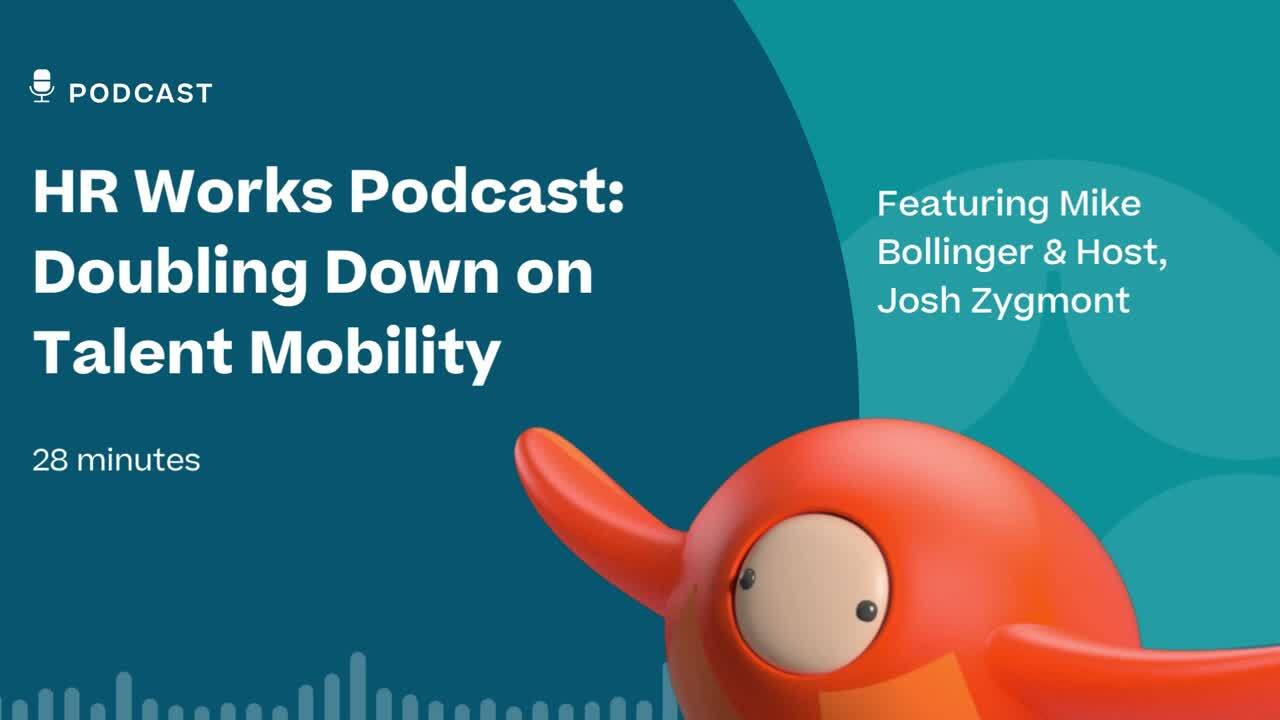The chilling misconceptions of a hiring freeze
In today’s world, the turmoil of uncertainty can leave many reeling with the unknown and unexpected. According to Bloomberg, there have been more than 94,000 job cuts across the tech sector in 2022.
As organizations strategize for the upcoming year, many leaders have decided to implement a hiring freeze and pause all new talent acquisition activities.

Some common misconceptions about hiring freezes are that they only happen during complex macroeconomic conditions, leaving teams overwhelmed with the additional workload and managers grappling with how to forge a path forward. But when organizations implement a hiring freeze, they have an opportunity to focus on employee development and invest in their people. A pause on filling open positions can be a strategic part of an organization’s plan to recenter and refocus on company goals.
Our Global VP of Strategic Initiatives Mike Bollinger partnered with Lighthouse Research & Advisory’s Chief Research Officer Ben Eubanks to discuss antidotes for hiring freezes on a recent SHRM webinar. The pair also covered groundbreaking findings from the recent research study, “Ready set, grow: The building blocks for high-impact talent mobility.”

Preparing for a slower economy in 2023
The year 2023 is already beginning with organizations being more cautious about hiring, yet this does not have to hinder their ability to innovate and grow. When companies develop a growth mindset by investing in their people, it strengthens employee engagement and boosts business performance. Organizations now have an opportunity to become future-ready with their current workforce within the current teams led by talent leaders.
Talent mobility is critical. HR leaders must understand their employees' expectations around career and skill development. The report found that companies with better revenue, employee retention and employee engagement are 65% more likely to have technology that offers career visibility. When managers encourage talent development with online classes, self-directed learning and certifications, employees are likely to have higher, more positive perceptions of belonging.
All hands on deck! Why your people are your greatest asset
People within an organization matter. When talent transitions in large numbers, the impact can negatively affect the organization. These employees have skills, talents and attributes that support a future-ready workforce. And when people transition out of an organization, it creates skills gaps in abilities and strengths many companies didn’t know they needed.
The research study surveyed 1,060 employers and 1,000 employees in North America, Europe and Asia and the results ultimately revealed the demand for internal career opportunities. Regarding revenue and engagement, high-performing organizations were more apt to focus on talent mobility. The study showed that 47% of employees would feel more satisfied if they could explore different career opportunities. Yet one in five employees feels they don’t have career visibility. This absence of information can trigger a lack of engagement.
The research found that workers who do not have visibility into internal career growth opportunities are 61% more likely to quit or find alternative positions at other companies. Bollinger shared that after surveying 1,000 employees, talent who do not see the potential for advancement and internal opportunities are three times more likely to be uninterested in other internal positions within the company.
“What’s interesting to me,” said Eubanks, “is that half of the workers we surveyed agreed that a chance to explore employee development opportunities would make them feel happier and supported in their careers long term.”
So, how can organizations drive internal talent mobility and grow their people from within? Below are the strategies organizations can use to reskill their talent, keep them engaged and ensure their upward trajectory aligns with their organization’s needs.
Personalizing career growth
When considering talent mobility, the first strategy is personalizing your organization’s career growth approach. Personalization means understanding the people on your team and creating innovative ways they can utilize technology to explore the skills and career development they desire.
Bollinger highlighted how an opportunity marketplace, when looking at skills and matching talent to organizations' needs, can help to motivate employees during their career journey. By focusing on flexible career paths — not just traditional career ladders — through an opportunity marketplace, organizations can retain talent during hiring freezes and still support the company's overall goals. A self-developing workforce puts people in the driver’s seat of their own career opportunities.

Mike Bollinger, Global VP of Strategic Initiatives, Cornerstone, takes a closer look at the findings from the 2023 Talent Mobility Study, released by the Cornerstone People Research Lab and Lighthouse Research & Advisory.
Tapping into technology
HR technology has amazing impacts on talent mobility. Eubanks shared that 80% of employees prefer self-service technology to initially explore career opportunities, more so than speaking with a manager.
Providing employees with the tools to explore career paths that match their skills and interests during a hiring freeze can significantly impact employee engagement. And employees that work for a company that has access to self-service technology for career mobility technology are 50% less likely to quit their job compared to those with no visibility.
When managers are career enablers that invest in their people with innovative HR technology, employees feel supported, engaged and ready to perform to the best of their abilities.
Leveraging manager support
Workers in the talent mobility study were scored on their perceptions of belonging, revealing some stark differences in people with high and low scores. The data showed that high-belonging employees were 190% more likely to say their manager would support their career growth. On the other hand, low-performing organizations are 50% more likely to say that managers hold onto their people too tightly from a career advancement perspective.
Managers who encourage their employees to explore career development opportunities openly are much more likely to have employees who are willing to stick around. Employees who scored low in the survey are six times more likely to say they don’t know if their manager or employer tracks their skill development.
Managers play a pivotal role in putting learning technology into practice, creating skills that match interests and investing in necessary career conversations.
Creating cohesion to make work, work
Visibility is vital during a hiring freeze so that employees know what opportunities are available, and organizations can support their people’s talent development. For employee retention rates and career development to blossom, organizations need to consider a company-wide shift in how talent mobility is managed.
HR leaders have an opportunity to create transparent and accessible career exploration opportunities to enhance employee learning, growth, and retention in this ever-evolving economic climate.
To learn how to creatively conquer the business challenges of tomorrow and ensure your people feel passionate about work, download this eBook
co-authored by Dr. Edie Goldberg, an expert in the future of work and talent management.
Related Resources
Want to keep learning? Explore our products, customer stories, and the latest industry insights.
Blog Post
Causes, consequences and solutions for the talent drought
As we inch closer to 2024, organizations find themselves in the middle of a talent drought. This worker shortage is sending shockwaves through various industries, becoming a pervasive concern from boardrooms to production plants. The lack of qualified employees will shape next year’s global economic landscape.
Blog Post
Die 5 großen Vorteile eines Talent Marketplace
Heutzutage bleiben Mitarbeitende nur noch selten in einem bestimmten Beruf. Anstatt in einer Abteilung eines Unternehmens die Karriereleiter zu erklimmen, wechseln sie häufig zwischen verschiedenen Funktionen und Branchen, um ihre Fähigkeiten auszubauen. Personalabteilungen können sich diese Art von Karriereplanung zu Nutze machen, indem sie mittels eines Talent Marketplaces Mobilitätsmöglichkeiten anbieten und die Mitarbeitenden ermutigen, ihre Karriere selbst in die Hand zu nehmen.
Blog Post
5 big benefits of a talent marketplace
These days, employees rarely stick to one job track. Instead of climbing the corporate ladder in one department of one company, they’re likely to move between roles and industries to build their skill sets. Human resources (HR) teams can capitalize on and engage with this career convention by utilizing a talent marketplace to provide mobility opportunities and encourage employees to take charge of their careers.